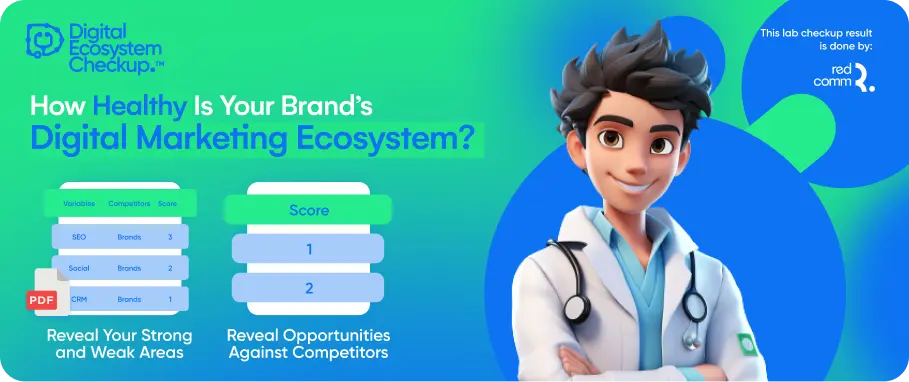Your website is your digital fortress, the nucleus of your online presence. Yet, in the ever-evolving landscape of digital trends, it's easy for your site to feel outdated.
5 Easy Ways to Enhance Your Website’s User Experience

The prospect of a complete redesign might seem daunting, especially if you're tight on time and resources.
Fear not! We've curated a list of 5 straightforward ways to enhance your website's user experience without breaking the bank.
1. Speed Up Your Page Load
Google comes to the rescue with a free tool that not only assesses your current speed but also dishes out handy suggestions for improvement on both mobile and desktop platforms. It's like having a personal trainer for your website's performance.
One major culprit behind sluggish load times? Bloated image files. Before uploading images to your site, be sure to compress them to trim the fat.
Tools like compressor.io can work wonders in slashing load times and keeping your audience glued to the screen.
Take a cue from Barnes and Noble's playbook, their website loads with lightning speed, regardless of the device.
By prioritizing the loading of crucial elements, they ensure that users aren't left twiddling their thumbs. Experience the speed for yourself and see the difference it makes.
2. Utilize Bullet Points for Clarity
When it comes to conveying key information quickly and effectively, nothing beats the humble bullet point.
By breaking down your content into bite-sized nuggets, you make it easier for users to digest and retain information.
From highlighting product features to showcasing benefits, bullet points are your secret weapon in the battle for user engagement.
But why stick to plain old circles when you can jazz things up with eye-catching icons? With a plethora of options available, you can add visual flair to your bullet points and enhance readability.
Just take a peek at One.org, where icons take center stage in conveying achievements and milestones.
Plus, don't overlook the power of white space, it's the unsung hero that ensures your bullet points shine bright.
3. Craft Compelling Headings
Your website's headings are more than just catchy phrases or clever titles, they're signposts that guide users through your content.
By carefully crafting well-designed and informative headings, you not only improve readability but also enhance the overall user experience.
Consider incorporating relevant keywords into your headings to boost your site's visibility on search engines.
This not only helps attract the right audience but also ensures that your content aligns with what users are actively searching for.
Remember, search engines prioritize headings, so making them stand out can significantly improve your site's searchability.
Take inspiration from industry leaders like Tilde, who excel in creating headings that are visually striking and accurately reflect the content that follows.
Consistency in design and messaging is key to building trust and keeping users engaged.
4. Enhance Hyperlink Visibility
Hyperlinks are the lifeblood of the internet, guiding users from one page to another with a simple click.
But not all hyperlinks are created equal, differentiation is key to ensuring that users can easily identify clickable links within your content.
Visual cues such as underlined text or different colors are universally recognized signals that indicate a hyperlink.
Studies have shown that users instinctively gravitate towards blue, underlined text as clickable links, so sticking to these conventions can greatly enhance user experience.
When adding hyperlinks to your content, consider the length and clarity of the link. Longer, descriptive links are not only easier to identify but also provide users with valuable context about where the link will take them.
For example, compare "To check out the other tips click here" with "Check out the other tips here", the latter is more concise and informative.
5. Optimize Call to Action
Ever clicked on a button because it just spoke to you? That's the magic of a well-designed call to action (CTA).
These clickable prompts guide users through your website, directing them to the content they seek. But what makes a CTA truly effective?
Firstly, color matters. Studies have shown that different colors evoke distinct emotions and messages.
For instance, a vibrant red might convey urgency or excitement, while a calming blue suggests trust and reliability. Choose colors that align with your brand and the message you want to convey.
Secondly, the words you choose for your CTAs are paramount. Action-oriented verbs like "Join," "Discover," or "Start" compel users to engage.
Incorporating time-sensitive language, such as "Limited Time Offer" or "Act Now," adds urgency, nudging visitors to take action promptly.
Take a cue from successful brands like WUFOO, whose website is a masterclass in effective CTAs.
With phrases like "Sign Up Now" and "Get Started," they guide users seamlessly through the conversion funnel, making every click count.
When you strategically design your CTAs with attention to color psychology and persuasive language, you can enhance user engagement and drive conversions.
Implementing these tips doesn't require a hefty budget. So why wait? Start optimizing your website today and watch your engagement soar.
DISCOVER MORE OF WHAT MATTERS TO YOU
RELATED TOPIC



